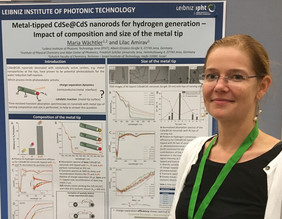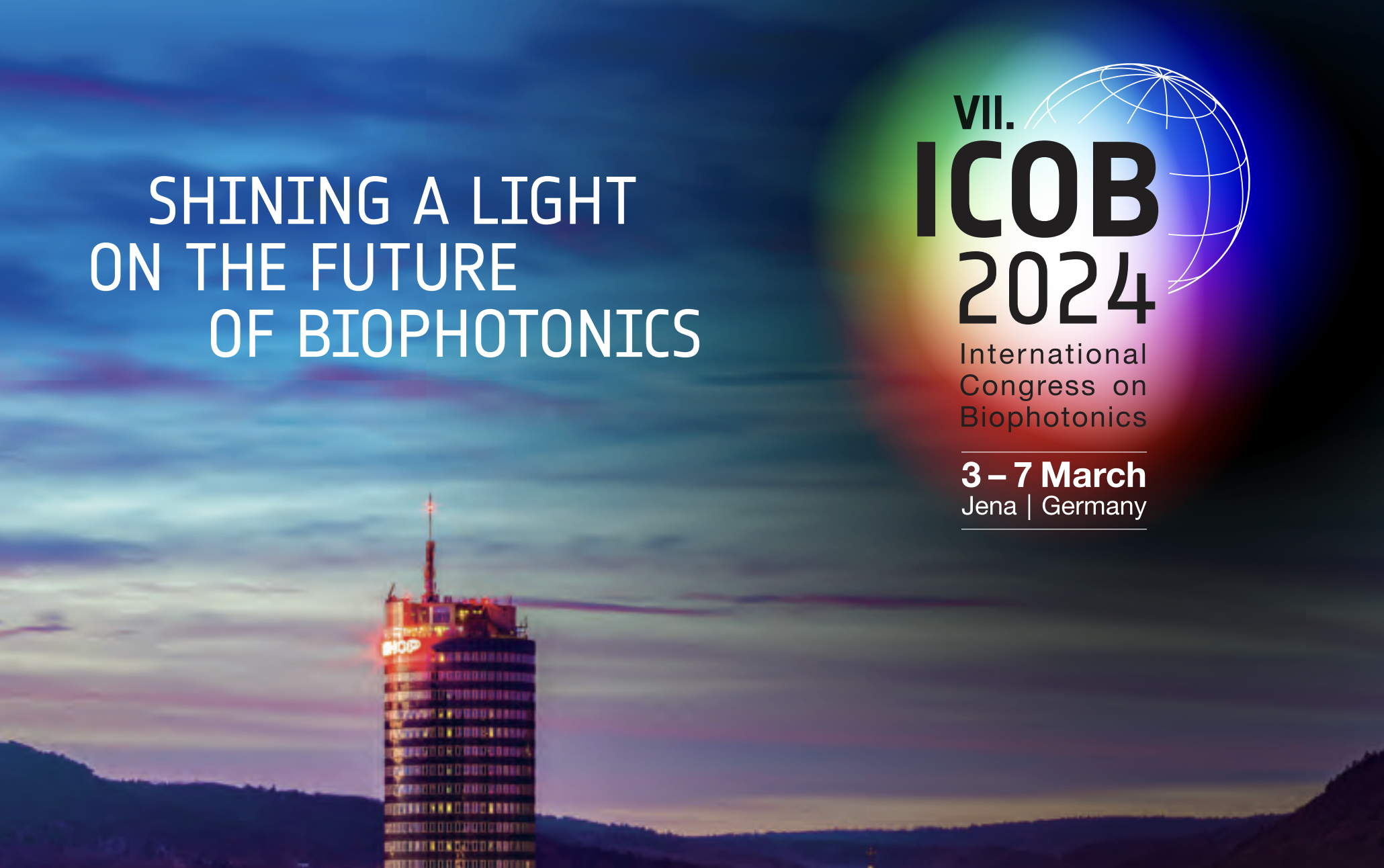Maria Wächtler awarded for poster on hydrogen production

Dr. Maria Wächtler from Leibniz-IPHT was awarded the “Nanoscale Horizons” poster prize at the “nanoGE Fall Meeting” in Torremolinos, Spain, on October 24, 2018. In her poster presentation “Metal-tipped CdSe@CdS nanorods for hydrogen generation — Impact of composition and size of the metal tip”, Maria Wächtler explained how so-called CdSe@CdS nanorods can be used as efficiently as possible to generate hydrogen from water.
Together with Professor Lilac Amirav from the Technion in Haifa, Israel, the Jena scientist was able to use time-resolved absorption spectroscopy to show how metal nanoparticles on the nanorods must be structured in order to optimally influence their effect as photocatalysts. By determining the optimum size of the metal nanoparticle, Maria Wächtler and Lilac Amirav provided a result that is of relevance not only for the application in photocatalysis but for all areas in which charge separation is used at semiconductor/metal interfaces.
Maria Wächtler heads the work group „Ultra-short time spectroscopy“ within the research unit “Functional Interfaces” at Leibniz-IPHT. At the international “nanoGe Fall Meeting”, researchers discuss new findings from areas such as renewable energies (photovoltaics, batteries), lighting, synthesis and fundamental processes in semiconductor quantum dots, 2D materials and bioimaging.
More information on the study by Maria Wächtler and Lilac Amirav can be found in the following publications: M. Wächtler, P. Kalisman, L. Amirav, Charge-Transfer Dynamics in Nanorod Photocatalysts with Bimetallic Metal Tips, J. Phys. Chem. C, 120 (2016), 24491-24497.
Y. Nakibli, Y. Mazal, Y. Dubi, M. Wächtler, L. Amirav, Size Matters: Cocatalyst Size Effect on Charge Transfer and Photocatalytic Activity, Nano Letters, 18 (2018), 357-364.
Contact
Related News
Third party cookies & scripts
This site uses cookies. For optimal performance, smooth social media and promotional use, it is recommended that you agree to third party cookies and scripts. This may involve sharing information about your use of the third-party social media, advertising and analytics website.
For more information, see privacy policy and imprint.
Which cookies & scripts and the associated processing of your personal data do you agree with?
You can change your preferences anytime by visiting privacy policy.


